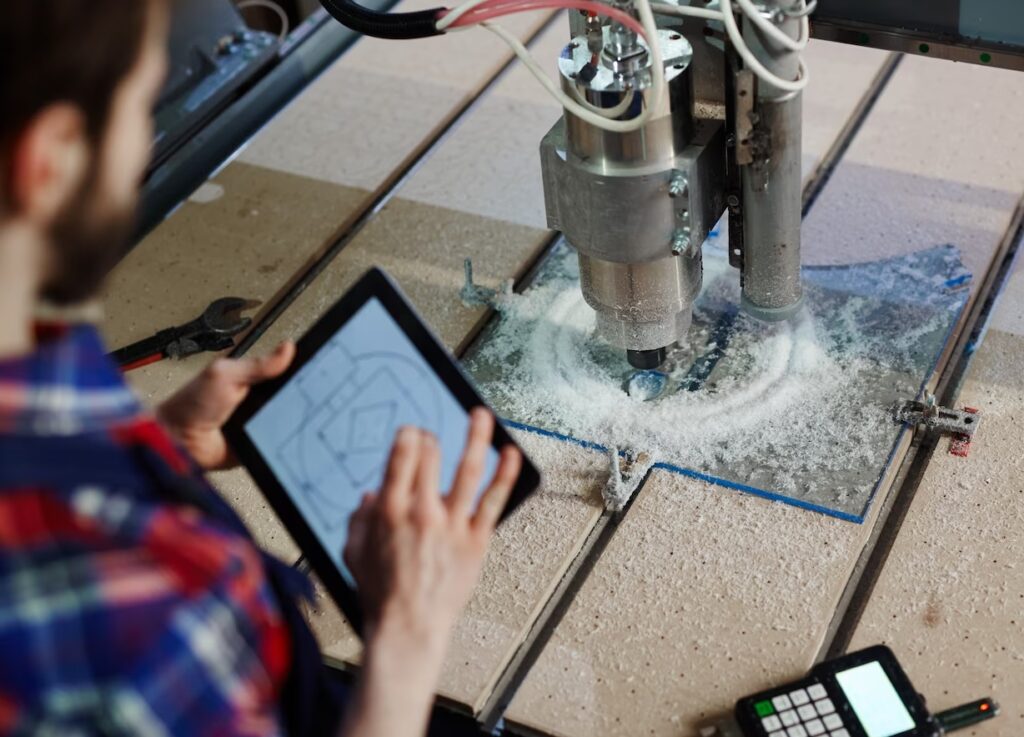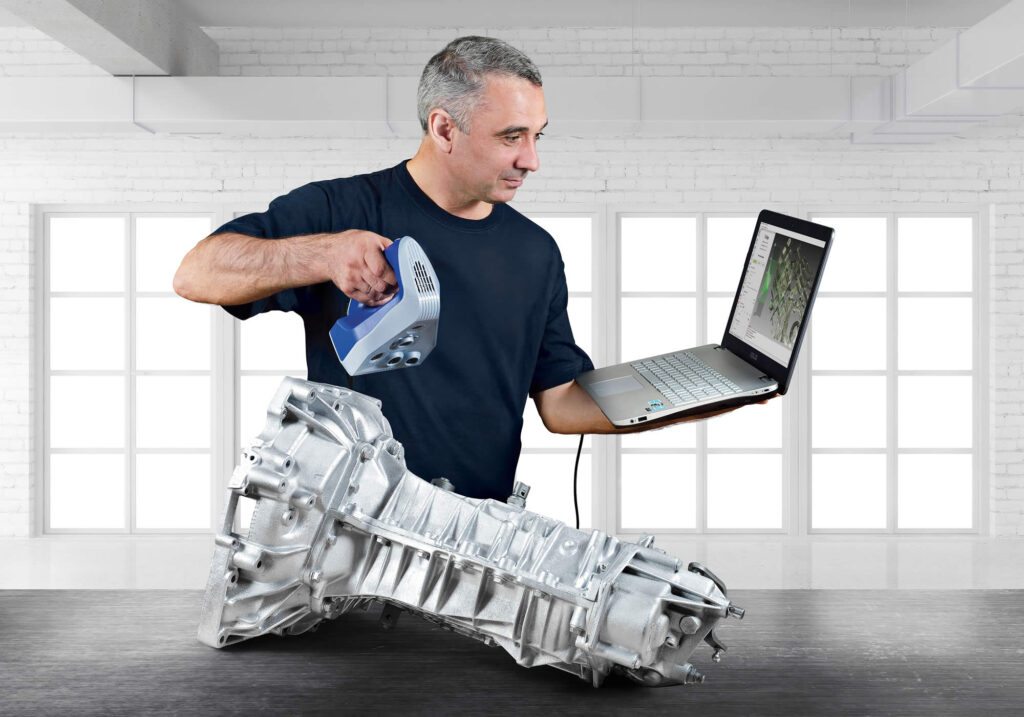Table of Contents
Introduction: Bridging the Real and the Digital
In an age defined by technological breakthroughs, 3D scanning presents groundbreaking potential. What exactly encompasses 3D scanning? And why does it hold such significance in the contemporary era?
3D scanning entails creating digital three-dimensional models from real-world objects. This transformation from physical to digital, with astounding precision and speed, has revolutionized industries. From traditional measurements to contemporary design methods, 3D scanning offers a faster, more accurate alternative.
In the current landscape, 3D scanning’s role extends across sectors such as medicine, construction, and research. It accelerates product development, enhances manufacturing accuracy, and pioneers scientific explorations.
Understanding 3D Scanning: Principles and Purposes
At first glance, 3D scanning may seem intricate. However, with technological evolution, it’s becoming increasingly intuitive.

The Heart of 3D Scanners
Various technologies drive 3D scanners — laser beams, structured light, or a combination of multiple methods. These devices capture an object’s surface, converting it into a digital format. Rapid measurements result in an accurate 3D representation, which can be further fine-tuned using specialized software.
The Spectrum of 3D Scanning Applications
The versatility of 3D scanning shines across diverse domains:
Medicine: Crafting tailored prosthetics, visualizing surgeries, and more.
Manufacturing: Revolutionizing prototyping, quality assurance, and automated production lines.
Art and Design: Creating art installations, sculptures, or unique fashion pieces.
Archaeology: Digitally reconstructing and safeguarding historical treasures, allowing public access without risking damage.
The Multifaceted Benefits of 3D Scanning
Beyond its revolutionary aspect, 3D scanning extends a plethora of advantages central to many industries.
- Economical and Efficient
Traditional methods, though reliable, are time-intensive. 3D scanning slashes this time, offering quicker and accurate models without manual measurements or extensive tests. - Precision Personified
Modern 3D scanners boast of unparalleled accuracy, capturing object details down to a fraction of a millimeter— ideal for precision-demanding sectors like aerospace or medicine.
Digital Modification at Your Fingertips
Once scanned, the 3D model can be digitally altered. Be it rectifying imperfections, introducing design changes, or collaborating in real-time, the digital model is a dynamic workspace.
Concluding, 3D scanning isn’t just an innovation — it’s a transformative tool heralding a new technological era. Industries stand at the cusp of vast potential, with 3D scanning serving as the catalyst.

The Main Stages of 3D Scanning Service Provision
Executing a 3D scanning procedure isn’t just about instantaneously capturing an object’s image. This multifaceted process consists of several pivotal stages, each crucial for guaranteeing the final result’s quality and precision. Let’s delve into these stages.
Consultation and Planning
Before initiating the scanning process, specialists engage in a consultation with the client. This step facilitates a comprehensive understanding of the project’s objectives, the distinctive features of the object, and the specific requirements of the client. Such insights help in pinpointing the best scanning techniques, as well as the requisite equipment and software.
The Scanning Process Itself
This phase entails the actual scanning of the object. Specialists adeptly calibrate the equipment, bearing in mind the unique characteristics of the object and the precision requisites. The duration of this process is contingent on the object’s size and intricacy, ranging anywhere from a few minutes to several hours.

Processing and Optimisation of the 3D Model
After the scanning concludes, the gathered data undergoes further refinement. This phase entails the elimination of any potential noise and irregularities, ensuring that the model is primed and optimized for subsequent applications.
Post-Processing and Preparation for Utilization
The culmination of the process involves prepping the 3D model for its intended application. This could encompass tasks like texturing, enhancing details, adjusting for specific software, or even getting the model ready for 3D printing.
To sum it up, the provision of 3D scanning services is intricate, demanding expertise. However, thanks to methodically structured procedures combined with cutting-edge technology, clients are assured high-quality, precise 3D models tailored to their specifications.
Selecting Hardware and Software
When it comes to choosing 3D scanning equipment, numerous factors come into play. Among the plethora of models available in the market, Artec consistently stands out. Let’s explore its advantages by comparing it to other popular scanner models.
| Parameter | Artec Eva | NextEngine | Faro Focus |
| Accuracy | 0.1 mm | 0.12 mm | 0.2 mm |
| Scanning Depth | up to 1 m | up to 0.3 m | up to 0.6 m |
| Scanning Speed | 2 million dots/sec | 1 million dots/sec | 0.9 million dots/sec |
| Colour Reproduction | Yes | No | Yes |
| Software Integration | High | Medium | Medium |
From the data in the table, it’s evident that Artec Eva excels in most parameters, notably in scanning speed and the depth of detail captured.
Software for Processing 3D Scans
Various software solutions exist for processing 3D scans. Yet, Artec Studio distinguishes itself with its user-friendly nature, robust features, and compatibility with numerous scanners. When juxtaposed with programs like MeshLab or Geomagic, Artec Studio offers a more intuitive interface, automated processing, and versatile export options.
Section Conclusion
In the realm of 3D scanning, selecting the appropriate hardware and software is pivotal. With its avant-garde features and seamless software integration, Artec emerges as a frontrunner, equipping both experts and beginners with the means to produce exceptional outcomes.
Challenges and Limitations of 3D Scanning
Notwithstanding the manifold advantages of 3D scanning and its burgeoning relevance across diverse sectors, it’s not devoid of limitations and inherent challenges. Recognizing these restrictions aids in tailoring the scanning methodology and in reducing potential discrepancies.
Confronting Textures and Reflective Surfaces
A significant challenge posed to 3D scanners is dealing with reflective and transparent surfaces. These surfaces have the potential to deflect or scatter laser beams or structured light, which might lead to inaccurate results. While contemporary scanning mechanisms and software proffer remedies to mitigate these aberrations, a comprehensive resolution often demands supplementary manual intervention.
Constraints Pertaining to Object Size and Detail
3D scanners are crafted to function within designated boundaries related to size and detail. Certain devices excel at scanning diminutive objects with profound detailing, whereas others are adept at accommodating larger items. Such confines might necessitate the deployment of an array of devices or varied scanning techniques to garner optimal outcomes.
Section Conclusion
3D scanning, as potent as it is, unveils boundless prospects when judiciously employed. However, being apprised of its inherent constraints and potential issues ensures error prevention and guarantees superior results for every endeavor.
The Future of 3D Scanning
3D scanning, initially a specialized domain, currently teeters on the brink of groundbreaking metamorphosis and widespread acceptance.
Technological Advancements and Future Trajectories
Annually, the realm of 3D scanning witnesses significant enhancements. The algorithms for data processing are continuously refined, and both the speed and precision of data acquisition surge. Pioneers like Artec are steering the sector’s evolution with their trailblazing solutions.
Expanding Domains and Business Prospects
In the foreseeable future, 3D scanning is poised to permeate an even broader spectrum of industries. Ranging from healthcare and construction to entertainment and pedagogy, the gamut of potential applications for this technology is virtually boundless, inaugurating a plethora of opportunities for enterprises.
Conclusion
3D scanning reaffirms the feasibility of generating precise digital counterparts of tangible entities. This exposition has accentuated several salient aspects, spanning the rudimentary operational principles of the technology, its myriad advantages, anticipated hurdles, and prospective avenues.Undoubtedly, Artec asserts its supremacy in this discipline, offering premium-grade solutions coupled with pioneering strategies. For those keen on delving deeper into this domain or seeking to incorporate 3D scanning into their commercial ventures, the Learning Centre on Artec’s website offers a wealth of valuable insights.
Helen’s passion is 3D Technology. She always loved hi-tech but 3D Reality was something that she never thought of before. She attended the first course on 3D printing technology and she was immediately fascinated by it.
